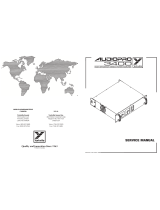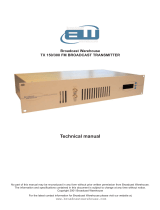Below you will find brief information for Communications Receiver S680X. This document provides detailed information about the Eddystone S680X Communications Receiver. It includes circuits, parts lists, component identification, test point voltages, an underside view of the chassis, and an overview of the band change switch. The document also offers guidance on understanding the band change switch and how it operates, as well as specific test point voltage values for the device. It also contains a components list. It could be used during repair or restoration process.
Below you will find brief information for Communications Receiver S680X. This document provides detailed information about the Eddystone S680X Communications Receiver. It includes circuits, parts lists, component identification, test point voltages, an underside view of the chassis, and an overview of the band change switch. The document also offers guidance on understanding the band change switch and how it operates, as well as specific test point voltage values for the device. It also contains a components list. It could be used during repair or restoration process.

















-
 1
1
-
 2
2
-
 3
3
-
 4
4
-
 5
5
-
 6
6
-
 7
7
-
 8
8
-
 9
9
-
 10
10
-
 11
11
-
 12
12
-
 13
13
-
 14
14
-
 15
15
-
 16
16
-
 17
17
Below you will find brief information for Communications Receiver S680X. This document provides detailed information about the Eddystone S680X Communications Receiver. It includes circuits, parts lists, component identification, test point voltages, an underside view of the chassis, and an overview of the band change switch. The document also offers guidance on understanding the band change switch and how it operates, as well as specific test point voltage values for the device. It also contains a components list. It could be used during repair or restoration process.
Ask a question and I''ll find the answer in the document
Finding information in a document is now easier with AI
Related papers
Other documents
-
Sony TC-630 User manual
-
HP 4260A User manual
-
Swann 350d Installation, Operation and Maintenance Manual
-
HP 4440b User manual
-
 National Products NC-300 User manual
National Products NC-300 User manual
-
Swann 350 Operation And Maintenance
-
 YORKVILLE Audiopro 3400 User manual
YORKVILLE Audiopro 3400 User manual
-
Gryphon Diablo 120 DAC Module User manual
-
Tektronix 1721 User manual
-
 Broadcast Warehouse TX 25/50 Technical Manual
Broadcast Warehouse TX 25/50 Technical Manual

























